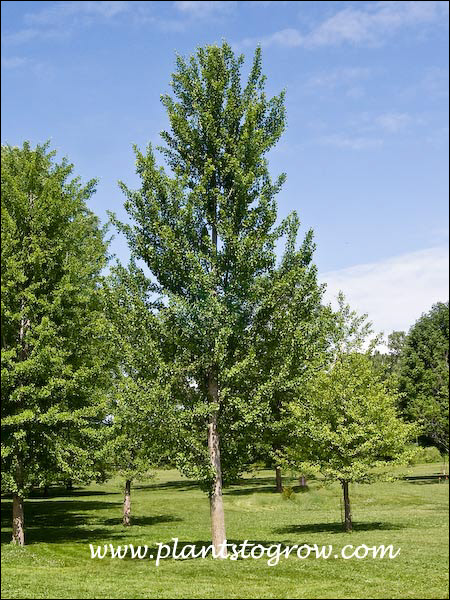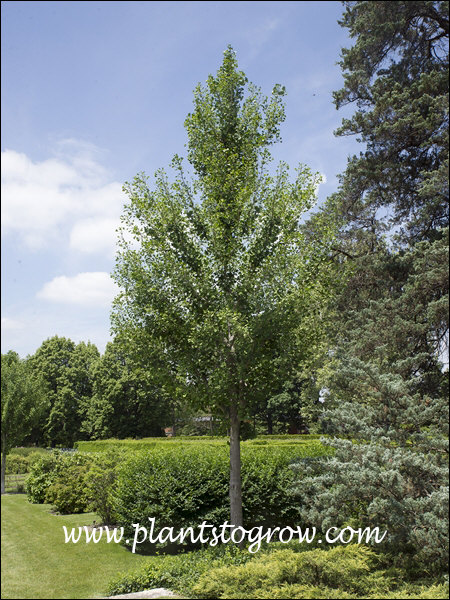| Description | An all male cultivar of Sentry Ginkgo. |
|---|---|
| Pronunciation | (GINGK-go)(bi-LO-baa) |
| Plant Type | All Plants, Trees Deciduous |
| Hardiness Zone | 5 |
| Sunlight | full |
| Moisture | average, moist |
| Soil & Site | prefers sandy, moderately moist, very adaptable to most sites |
| Flowers | a male selection, doesn't produce the undesirable fruit |
| Fruit | The fruit is produced on male trees and it is messy and malodorous. Starts producing seeds at about 20 years. The seeds are popular in some oriental cuisine and used as a medicine. |
| Leaves | simple, alternate, leathery, found in clusters on spurs, fan shaped, dichotomous veined, incised at the broad fan tip and dark green, yellow in the fall |
| Dimensions | 40-50' high by 20-25 feet wide, upright, narrowly conical habit |
| Native Site | Species plant native to China. |
| Cultivar Origin | This cultivar was first planted in 1940 in the Roosevelt Boulevard, Philadelphia Pennsylvania USA. Introduced by the Princeton Nursery of New Jersey USA in 1972-73. |
| Misc Facts | The Ginkgo is the lone remaining species in an ancient group of plants, thriving during the time of the dinosaurs. If mother nature had her way the Ginkgo would be just about extinct. They where planted in Kaifeng, the capitol city of the Sung dynasty and under cultivation Ginkgo avoided the natural process of evolution. A few wild plants existed as late as 1933 in China. |
| Notes & Reference | References:#1-Manual of Woody Landscape Plants (Michael Dirr), #75-Encyclopedia of Nuts, Berries and Seeds (John Heinerman), #93-North American Landscape Trees (Arthur Lee Jacobson) |

Cart


